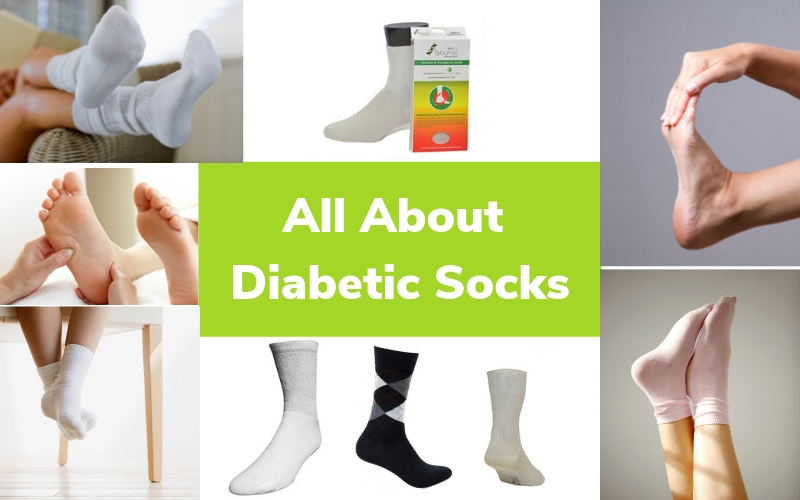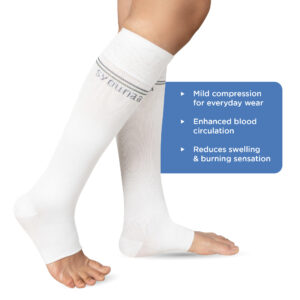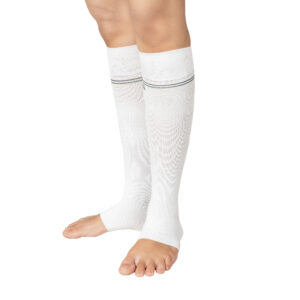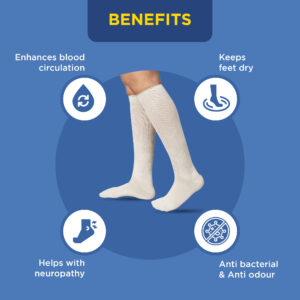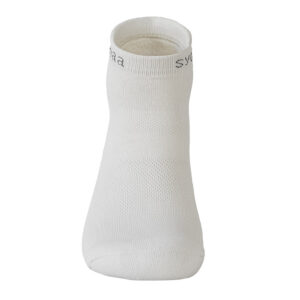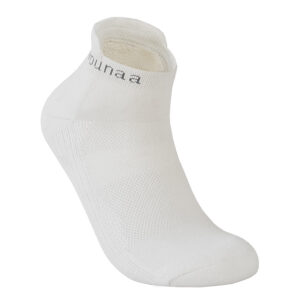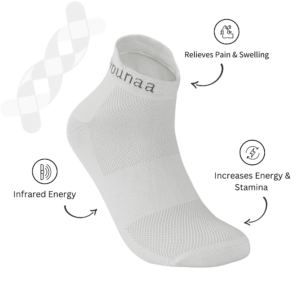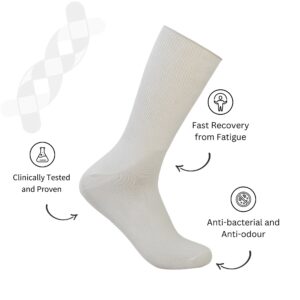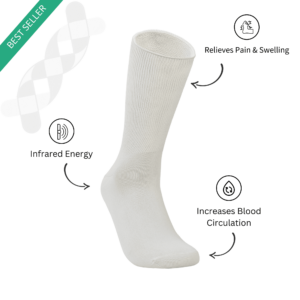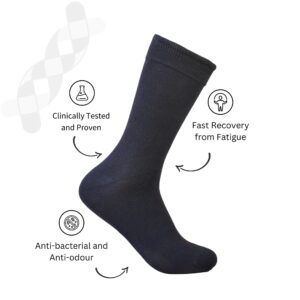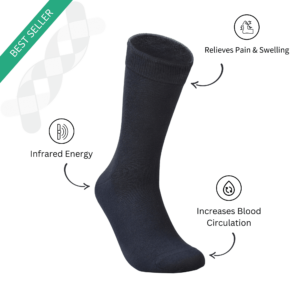Diabetic socks are designed to protect your feet from diabetes-related foot problems.
Diabetes is a severe illness to live with. Excess sugar in your blood can affect different parts of your body – your arms, internal organs, but most commonly, your feet.
A research conducted by the International Diabetes Federation showed that people with diabetes are 20 – 30 times more likely to have a part of their lower extremities amputated.
Every 30 seconds, there is a person with diabetes, somewhere around the world, on the operating table, to have their lower limbs amputated! It is scary to think that someday, that patient can be one of us.
In this article, we will look at how diabetic socks combat foot problems commonly seen among people with diabetes. We will also look at how diabetic socks keep foot problems at bay so that you can live a healthy and fulfilling life.
What Are Diabetic Socks?
So, what are diabetic socks, and what do diabetic socks do? As the name suggests, diabetic socks are designed to give comfort to people with diabetes and reduce foot-related problems.

Excessive blood sugar, freely floating around your feet, can cause a lot of problems, like frequent infections, foot pain, soreness, numb feet, etc. People with diabetes may also lack sensations around their feet, which makes it difficult for them to identify foot infections.
A pair of diabetic socks can help you manage the above problems better. In order to prevent frequent foot infections, diabetic socks must be seamless so that they don’t cause any irritation. The fabrics are deliberately soft to keep the feet comfortable and free from infections. These socks must also be warm to promote blood circulation and reduce foot pain.
Diabetic socks are usually made white. Since many people with diabetes are numb around their feet, they are unable to feel pain and fluid discharge. If they wear a pair of white socks, it is easier to notice an open wound or blood, which is why most diabetics socks are made white.
Lastly, a good pair of diabetic socks should not add to the many foot problems a person with diabetes already has. For instance, a person with diabetes has poor blood circulation around their feet. Regular socks have tight elastic bands that cut blood circulation. A no-diabetic person will get nothing more than an itch, but a person with diabetes may even get an infection from the tight band. Good diabetic socks are those that are form-fitting and not at all restrictive.
Why Do People With Diabetes Require Diabetic Socks?
There are many reasons why you need a pair of diabetic socks. The most common being that it provides you with comfort and pain relief. A person with diabetes needs a little extra medical care to live a healthy life. Type 1 diabetics need insulin and glucose tablets to keep their sugar under control.
Diabetics must control their diet to keep their diabetes within range. If you take so much precaution for your core organs, your feet are no exception. Diabetic socks take care of your feet so that you can live life without worrying about your feet.
You can work out without having to think about foot infections from excessive sweating, and you can walk for long hours without having to stop because of foot pain. You will not have infections as often as before. So, in short, diabetic socks will give you the support needed to live a healthy life.
1. Diabetic Neuropathy
Diabetics are often affected by diabetic neuropathy, the most common type of which is peripheral neuropathy. It is a condition where the excess blood sugar levels impede the peripheral nerve. It is the most common type of neuropathy because the peripheral nerve is the longest nerve that extends from the hips to the tip of your feet.
The sensory nerves are responsible for sending signals to the brain. Heat, cold, pain, and so on, is sent to the brain so that we can react accordingly. When your feet are affected by peripheral neuropathy, you are unable to sense pain, touch, heat, and cold as well as you used to.
Neuropathy affects us all in different ways. Some feel an extreme tingling sensation while others are numb on their feet. Since diabetics are prone to foot ulcers and infections, diabetic neuropathy adds to their difficulty. When it compromises your ability to feel, you are less likely to react to minor injuries, which may lead to further complications.
There are unique diabetic socks for neuropathy. These socks either send you alerts of pain and infection because your feet are unable to, or they keep your neuropathy under control.
2. Peripheral Vascular Disease (PVD)
All veins and arteries are collectively called the vascular system. Excessive sugar in your blood can affect the smooth functioning of the veins and arteries. The reason your feet are most prone to PVD is that the longest veins and arteries extend from the hip to the tip of your feet.
When your feet lack a supply of fresh oxygen from the arteries, they are prone to infections, corns, calluses, etc. Oxygen also promotes healing, and so, without it, you will have frequent infections that take forever to heal.
It’s worse when you have PVD with peripheral neuropathy. Frequent infections are bad enough, but if you cannot feel infections, you are less likely to take action, making the situation even worse.
3. Foot Deformities
Since a diabetic foot is weaker than a healthy foot, they are more likely to develop painful deformities.
Bunions are the most common foot deformity. It usually occurs from tight footwear, but it can also run in the family. Since diabetes and obesity can lead to weaker bones, they become malleable and take the forms of other footwear rather quickly. So, if you wear pointed shoes, your big toe will push inwards to take the shape of your shoe.
Bunions are not only painful, but they also attract a host of new infections. Mainstream footwear is not designed to accommodate the extruding bunion, and hence, it tends to rub against the shoe and lead to more infections.
4. Prone To Infection
As discussed earlier, the lack of fresh oxygen attracts a host of infections around your feet. These infections can lead to something serious if you don’t treat them on time.
A study conducted in 2017 showed that 50% of all non-traumatic operations were indeed those done on diabetic feet. We often undermine the seriousness of the infection. Never take it for granted, especially if you have diabetes.
What Types Of Socks Are The Best For Diabetics?
There is a variety of diabetic socks to choose from; they are segregated based on the technology used to make the socks. Some of them use different technologies and therefore always debate against each other.
We will discuss each type of diabetic socks so that you can pick socks that are best for your requirements.
1. Compression Socks
Compression socks are not made solely for people with diabetes. They are used for varicose vein related problems, but since they have shown improvements in diabetic feet, doctors often recommend compression socks to diabetics.
People with diabetes and obesity often get this condition called venous insufficiency. A healthy vein collects blood and sends it back to the heart for re-oxygenation. But a venous insufficient vein has weaker walls and cannot hold the blood as well as it used to. As a result, the blood flows in two directions. Some of it goes to the heart, and the rest of it falls back into the affected vein.
Venous insufficiency is commonly seen on the feet and lower calf region because deoxygenated blood must travel against the force of gravity to reach the heart. They also travel the furthest distance when compared to other veins.
High blood sugar and/or obesity makes it difficult for your veins to remain firm, and they often weaken from the body’s weight. Compression socks are believed to give enough pressure to support your veins. It makes the veins firm and thus reduces varicose vein problems.
Though many people with diabetes find relief in compression socks, they aren’t the best choice for a diabetic. Here are a few reasons why:
- If they are too tight, they can lead to adverse effects
- If you already have cuts and wounds, a tight pair of compression socks can cause leakage
- They are not absorbent and antibacterial
- Often has an elastic band on the top, hence cutting oxygen flow
There is no doubt that compression socks are suitable for specific ailments. They have different levels of compression that are said to heal various foot problems. But since they aren’t made specifically for diabetics, they are not as beneficial as other diabetic sock varieties.
2. Padded Diabetic Socks
A diabetic foot is most prone to damage around the heels. That’s where all our pressure falls, and it continually rubs against the floor. Many people with diabetes get foot ulcers around the heel and the ball of the foot. Padded diabetic socks support the soles of your feet, especially the heels and ankles, to prevent diabetic-related foot injuries.
Diabetic socks use a range of different padding methods. Some increase the width of the sole by thickening the strands used to stitch the sole. Others use a gel padding where they sew in a thin layer of gel between the upper and lower layer of the sole. A few padded socks infuse silicone instead of gel.
The methods of cushioning the bottom may be different, but they all have the same function. Padded socks are designed to provide extra support and reduce pressure on the soles of your feet. Some padded socks have moisture-wicking abilities, creating an ideal environment for a diabetic foot.
3. Smart Socks
The last and most recent type of diabetic socks is smart diabetic socks. Manufacturers have recently designed smart socks for diabetics. They are new in the market and have a lot of potential for growth.
Smart socks have two primary functions:
- Sense/promote temperature changes – neurofabric technology allows manufacturers to infuse minerals in the fabric. These minerals can then detect, raise/lower temperature to keep your feet comfortable
- Infection Sensors – Some smart socks have 4 – 6 sensors spread across the feet to detect the onset of infection and alert you or your physician.
Not all smart socks perform both functions. If they perform either, they qualify as smart socks.
These socks can alter temperature and alert you of infections, because of the particular minerals infused in their material. For instance, copper in copper socks for diabetics, prevent the occurrence and recurrence of fungal infections.
3.1 Siren Diabetic Socks
Siren diabetic socks are a special type of smart diabetic socks that focus mainly on the monitoring and alerting features. These socks have 6 sensory points that touch different parts of the feet. They are connected either with your phone or your doctor’s phone.
The socks can read temperature changes, detect inflammation, onset of infection, foot ulcers, etc. and alert you accordingly. Isn’t that cool? Currently, such a technology is yet to come to India, but they are making some remarkable discoveries in America.
3.2. Specialty Diabetic Socks
These are smart socks that promote therapeutic healing around your feet. Though they may not have to alert agents, they belong to this category because of the special minerals infused in the fabric to promote healing.
Syounaa socks belong to this category. They use a special US-FDA Determined Celliant fibre, containing 13 unique minerals, infused in the fabric. These minerals trap body heat and convert it to infrared energy.
The infrared energy is dispersed among the feet to promote blood circulation. Increased blood circulation leads to oxygenation and natural healing.
Features Of Diabetic Socks
Though there may be many types of diabetic socks, their functions are similar to one another. So, while one may be better at fighting off infection, it should still promote blood circulation and relieve foot pain.
Here are some standard features of diabetic socks. The best diabetic socks are usually those that have all the below features.
1. Moisture Wicking
A key feature of diabetic socks is its ability to absorb moisture. Moisture attracts germs and bacteria; hence, a good pair of diabetic socks should be able to keep your feet dry. Many moisture-wicking socks have padded soles to keep your feet dry even during the most humid times of the year.
The anti-moisture properties make it easier for you to plan a long itinerary without worrying about your drenching your feet wet inside your shoes.
2. Non Conforming
The best-rated diabetic socks are those that are non conforming in nature. These socks take the form of your feet, making it super comfortable and easy to get in.
Non conforming socks are the opposite of compression socks because are not trying to press your feet. Instead, they fit your feet perfectly without suffocating it at all.
If you have bunions and other foot deformities, non-conforming socks are ideal for you. They accommodate your feet perfectly.
Since diabetic socks are non conforming, they do not bunch up at any corner of the feet even after vigorous activity. Bunched up socks are usually the most common reason for the infection. These socks are dedicated, shape huggers. They do not change their shape even after frequent wear.
3. Anti Infection
A common attribute of a pair of diabetic socks is that it prevents all kinds of infection. Be it bacterial, fungal, microbial infections, these socks are designed to keep them at bay.
A person with diabetes is prone to contamination, and once you get it, it’s challenging to get rid of it. So, different diabetic socks use a range of technologies to keep away infection.
For instance, we talked about copper socks earlier. These socks are made of copper-infused yarn because copper has antifungal properties. It prevents the occurrence and recurrence of Athlete’s Foot (which is very common among people with diabetes).
All diabetic smart socks have anti-infection properties. They have interwoven heat and cold sensors that can detect changes and warn the wearer of possible infections
4. Seamless
Diabetic socks must have minimal stitching. Sometimes, the threads in a piece of fabric can cause infections. So, when you look for diabetic socks in the market, always check the seams.
The tip is made of a single cloth instead of having two fabrics stitched together because our feet are prone to infection from the seams.
We hope these features help you pick the right socks for your needs. A good pair of diabetic socks should have all the above functions.
What Are The Benefits Of Diabetic Socks?
There are many benefits to wearing diabetic socks. Believe it or not, but a humble pair of socks can save your feet from amputations.
Even if your feet are not at threat for gangrene and amputations, diabetic feet are irritable, have compromised motor functions, and are often in pain. Diabetic socks combat all of these and provide you with comfort.
1. Increased Blood Flow
Diabetic socks promote blood circulation around the feet. Increase blood circulation would reduce the chances of infections and combat infections more effectively.
When these socks increase blood flow around your feet, you are less likely to have painful feet and can stay on your feet for a longer period.
2. Comfort And Stability
Increased blood circulation not only nourishes your feet but also heals damaged peripheral nerves. This is a gradual process that gives your feet some stability.
The comfort and stability found in diabetic socks allow you to stay on your feet for longer, travel for hours, and work without having to take breaks to massage your feet. So, with a good pair of diabetic socks by your side, you can live a healthy and happy life.
3. Reduced Foot Pressure
Another reason for people with diabetes to get a host of foot problems is because of the elevated foot pressure. This is partly because of the weight issues that many people with diabetes tend to have. The weight from your body squishes your feet. The bones squeeze on the plantar aponeurosis, and this leads to open wounds, cuts, lacerations, etc.
Diabetic socks are form-fitting; hence, it does not add pressure to your feet. But most importantly, they alleviate stress from your feet. Diabetic socks create an environment for blood to enter and leave your feet freely, and this safe passage your vascular system does not feel pressured. With reduced foot pressure, you can say goodbye to foot problems that occur from high foot pressure.
The comfort and stability found in diabetic socks allow you to stay on your feet for longer, travel for hours, and work without having to take breaks to massage your feet. So, with a good pair of diabetic socks by your side, you can live a healthy and happy life.
Diabetic Socks vs Compression Socks - What's The Difference?
The significant difference between diabetic socks and compression socks is that while the former is form-fitting, the later compress your feet. Diabetic socks are made specifically for diabetics, and compression socks are made for a range of foot-related problems.
Since compression socks are not made for diabetics, they may often initiate specific health problems that you may not have had otherwise. For instance, they are not padded, or absorbant, cannot increase blood flow and hence does not protect your feet against infection.

The significant difference between diabetic socks and compression socks is that while the former is form-fitting, the later compress your feet. Diabetic socks are made specifically for diabetics, and compression socks are made for a range of foot-related problems.
Since compression socks are not made for diabetics, they may often initiate specific health problems that you may not have had otherwise. For instance, they are not padded, or absorbant, cannot increase blood flow and hence does not protect your feet against infection.
So, as a person with diabetes, compression socks may not be the best for you. The only instance where it might be beneficial is when you have mild diabetes and have varicose vein problems. That’s when compression socks will give your veins support and circulate blood back to the heart.
Talk to your doctor before purchasing a pair of compression socks. They will find you the right fit and the correct length based on your condition.
How To Clean Diabetic Socks
Diabetic socks have delicate fibers, and washing them rigorously may damage them. It isn’t difficult to clean a pair of diabetic socks. The key here is to be gentle.
1. Hand Wash
If you want to have long-lasting socks, it is better to wash them by hand. Twisting and turning them in the washing machine can cause them to wear and tear. The fine fibers cannot survive the torture.
Wash them in a bucket, separate from other clothes. Make sure they are soaked in room temperature water. If the water is too hot, it can make smart fibers ineffective for future use.
Soak them in water for an hour with a mild detergent and transfer them to non-detergent water after an hour. Gently press them to remove the excess water and let them dry. Do not use a brush, pull, or mangle the socks.
2. Don't Use A Corrosive Detergent
Always wash diabetic socks in a mild detergent. Strong soaps can again alter its effectiveness. Small amounts of mild detergent are enough to do the job!
3. How Often Should You Wash Your Socks
Only wash them when necessary. If you wear them everyday, wash them once a day. Keep more than one pair for your feet.
But if you only wear them for a few hours, wash them only if they are too dirty or drenched with sweat. Try to wash them as soon as you can because it’s hard to remove the dirt and sweat once it has dried on the fabric.
4. Drying Diabetic Socks
All socks are different. Some can dry under direct sunlight while others cannot. Check the labels before you dry them under the sun.
It is best to air dry them. Avoid hair dryers to speed up the drying process and only wear the socks once it is completely dry.
Where To Buy Diabetic Socks? The Choices Available
There are a few socks sold specifically for people with diabetes. A majority of the socks are medical socks which are suitable for both diabetics and other foot-related ailments.
Syounaa socks are perhaps the only brand that sells smart diabetic socks. The fibers promote blood circulation so that your feet are healthy and able to combat bacteria.
You will also notice a reduction in foot sores and pains. Syounaa socks have been proven quite beneficial for peripheral neuropathy. If you have mild neuropathy, Syounaa socks will prevent the condition from getting worse. This is why it is one of the best diabetic socks in the market.
Here are a few other diabetic socks in the market:


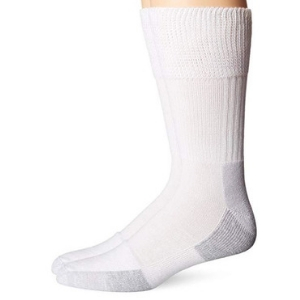
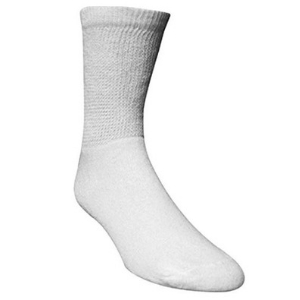
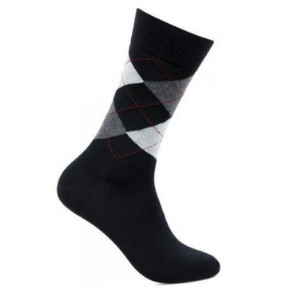
Diabetic Socks Choices
There are a few types of diabetic socks made for different foot needs. Here are to name a few:
1. Diabetic Socks For Men And Women
Ideally, diabetic socks are unisex. There is nothing significantly different in diabetic socks for men and women. However, you may find a higher size range for socks labeled for men and a smaller size range for those made for women.
There are more colours available in socks labeled for women, but, as discussed earlier, it is ideal for people with diabetes to wear light coloured socks.
2. Socks For Neuropathy
Socks explicitly made for neuropathy, soothe your nerves so that you don’t feel numb around your feet.
Almost all diabetic socks are made for neuropathy because it is one of the most common ailment among diabetics. However, neuropathic socks are comfortable, breathable, and soothing to wear.
2. Socks For Neuropathy
Do diabetic socks help blood circulation?
A good pair of diabetic socks should promote blood circulation. They don’t have an elastic band to secure the socks in place. Instead, it remains in place because of its’ form-fitting nature.
If the blood circulation around your foot is healthy, all other problems will be under control. For instance, a healthy supply of blood will prevent infections, nourish the nerves, supports the bones, and prevent deformities.
This is why diabetic socks need to promote blood circulation. Syounaa socks fall into this category. They create an environment that naturally leads to blood circulation. This then works to solve all other diabetic foot-related problems.
Can Anyone Wear Diabetic Socks?
Yes, of course! The only criteria for diabetic socks are two feet. That’s all you need! Many people don’t have diabetes and prefer to wear diabetic socks.
Here are some reasons why you may like a pair of diabetic socks:
- You have weight problems
- You have varicose veins
- You are flat-footed
- You’re prone to sprains and ankle injury
- You stay on your feet for a long time every day
- You play an intense sport that strains your feet
There are no side effects of diabetic socks, which is why anyone can benefit from it. If you have any of the above problems or if you want a comfortable pair of socks, consider having a look at diabetic socks.
We want to clarify that, while diabetic socks protect your feet from diabetic foot problems, it is essential to pay attention to your physical health and diet. Make sure you are eating right and working out every day. Don’t miss out on periodic doctor visits. A combination of all these, along with a good pair of diabetic socks, will give you happy feet!
We hope this article helps you understand what diabetic socks are and how they can help you. Feel free to continue the discussion in the comment section below.we are always eager to hear your thoughts.

